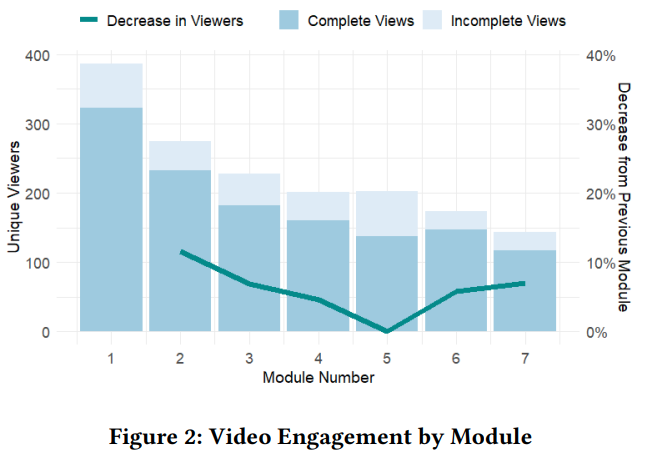A graph of EdX Course Engagement, showing complete retention during the math portions of the course (Modules 4-5).
Quantum computing presents a paradigmatic shift in the field of computation, in which unintuitive properties of quantum mechanics can be harnessed to change the way we approach a wide range of problems. However, due to the mathematics and physics perspective through which quantum computing is traditionally presented, most resources are inaccessible to many undergraduate students, let alone the general public. It is thus imperative to develop resources and best-practices for quantum computing instruction accessible to students at all levels. In this paper, we describe the development and results of our Massive Open Online Course (MOOC) "Introduction to Quantum Computing for Everyone." This course presents an introduction to quantum computing with few technical prerequisites. In the first half of the course, quantum computing concepts are introduced with a unique, purely visual representation, allowing students to develop conceptual understanding without the burden of learning new mathematical notation. In the second half, students are taught the formal notation for concepts and objects already introduced, reinforcing student understanding of these concepts and providing an applicable context for the technical material. Most notably, we find that introducing the math content in the curriculum's second stage led to no drops in engagement or student performance, suggesting that our curriculum's spiral structure eased the technical burden. DOI 10.1145/3545945.3569836
Jonathan Liu and Diana Franklin







